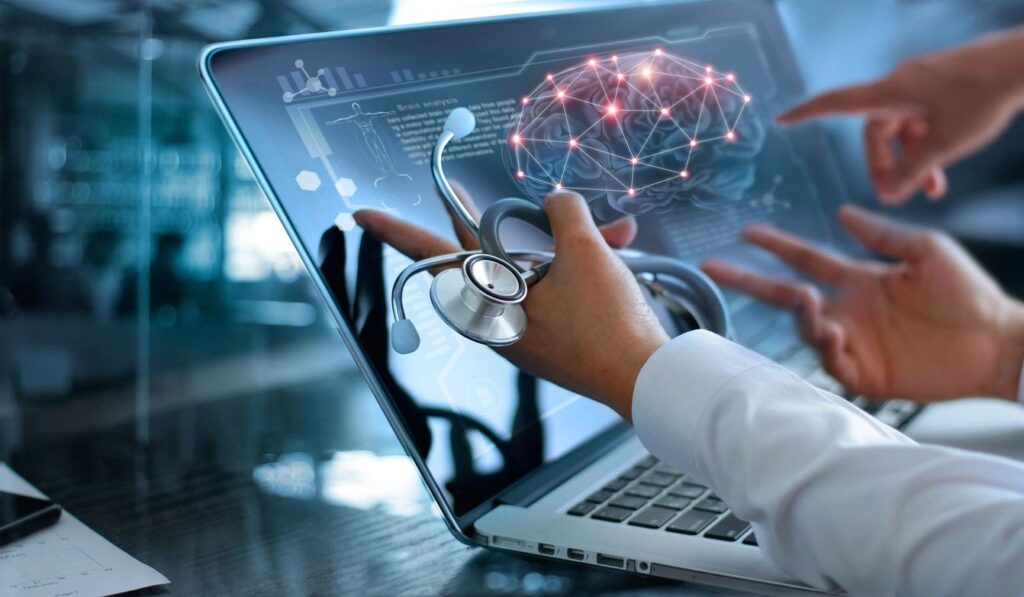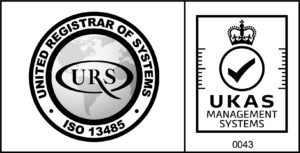
In the current setting of sedentary lifestyles and fast-paced life, burdened with demands from work or otherwise, periodic monitoring of vital health parameters is undeniably essential for holistic wellbeing. Here are a few reasons why periodic monitoring of parameters such as heart rate, blood pressure, and oxygen levels, is a must.
By regularly monitoring critical health parameters, it is possible to detect signs of illness or disease early on. This facilitates taking appropriate action to prevent or treat the condition before
it becomes severe.
Vital health parameters can provide important health related information and thus help evaluate a person’s holistic health. For example, high blood pressure can signify hypertension, a risk factor for heart disease and stroke.
Additionally, when one is being treated for an illness, monitoring vital health parameters can help to determine the treatment’s effectiveness, thus helping understand if the treatment is working or if adjustments need to be made.
Constant monitoring of vital parameters like heart rate, blood pressure, and oxygen Saturation is imperative to ensure you are healthy and works as a reassurance.
Last, but not least, monitoring vital health parameters can also be used in medical research studies to learn more about different conditions and to develop new treatments.
Monitoring and assessment made accessible by Bio-Scan
Bio-scan can refer to the many different types of scans or tests that gives a measure of various physiological parameters of the body.
Vital Sign Monitoring measures basic vital signs such as heart rate, blood pressure, respiratory rate, and oxygen saturation. These measurements are taken with vital signs monitoring devices, commonly used in hospitals, clinics, and in some home health monitoring systems.
Biometric Scanning measures various physiological characteristics, such as fingerprints, facial features, or iris patterns. Some applications can use this information to identify symptoms for early detection of disease or illness.
Body Composition Analysis measures body fat, muscle mass, and other parameters related to overall body composition. This can be done using various methods, such as Dual-energy x-ray absorptiometry (DXA) or Bioelectrical Impedance Analysis (BIA).
Health and Wellness Monitoring measures multiple parameters such as Heart Rate Variability, Resting Heart Rate, Stress level, Sleep analysis, etc. which are essential for monitoring the overall health and wellness of an individual.
Heart Rate Variability (HRV) is a measure of the variation in time between heartbeats. It is typically measured by analyzing the electrocardiogram (ECG) signal, which represents the heart’s electrical activity. HRV is an indirect measure of the Autonomic Nervous system. Low HRV is often associated with poor cardiovascular and respiratory function, inflammation, poor sleep quality, and poor stress management.
Resting Heart Rate (RHR) is the number of heart beats per minute when a person is at rest and not engaging in physical activity. A lower RHR is generally considered an excellent cardiovascular fitness indicator.
HRV and RHR can be used to monitor stress levels, as stress is associated with changes in these physiological parameters. High stress can cause an increase in heart rate, which can lead to a decrease in HRV and an increase in RHR.
A look into the market of Bio-scans
Today, there is a myriad range of technologies available on a variety of devices and wearables that can be used for bio-scanning. The ease of access and affordability of these devices has made taking a bio-scan test possible at the convenience of one’s home setting.
Smartphone-based monitoring: Many smartphones now come equipped with built-in sensors that can measure various physiological parameters, such as heart rate and oxygen saturation. There is also a gamut of apps that can be downloaded to a smartphone to enable additional monitoring capabilities, such as sleep tracking and stress level monitoring.
Wearable devices: There are a variety of wearables available, such as fitness trackers, smartwatches, and activity monitors, that can be worn on the wrist or other parts of the body to measure physiological parameters. These devices typically include sensors to measure heart rate, steps taken, and sleep quality.
Heart rate monitors: There are different kinds of heart rate monitors available now, ranging from traditional chest-strap monitors to wrist-based and ear-based monitors. These can be used to measure heart rate continuously or in real time.
Blood pressure monitors: Blood pressure monitoring devices can measure blood pressure at home. There are different kinds of blood pressure monitors that are available now. Some use an arm cuff, while others use a finger sensor.
Oximeter: A pulse oximeter is a non-invasive device that, when attached to the fingertip, uses light to measure the oxygen saturation in the blood (SpO2).
Body Composition Analyzer: This equipment uses different technologies such as Dual-energy X-ray absorptiometry (DXA) and bioelectrical impedance analysis (BIA) to analyze the body composition.
Smartphone-based monitoring, the pioneering Point-of-care testing
The smartphone is a pervasive information powerhouse, as it has become a vital tool for many people in their daily lives and is with us at all times. The smartphone has a variety of sensors that can be used for bio-scanning, such as cameras, microphones, accelerometers, and GPS. These sensors can be used to measure various physiological parameters. Many mobile applications have been developed to allow individuals to measure and monitor various health parameters such
as heart rate, sleep, and stress level. With technological advancements, smartphones are becoming more powerful, and several apps can track health information in real-time. They also store detailed assessments of historical data, which can provide an efficient way to manage health.
Why do we need Non-invasive testing ?
For several reasons, there is a mounting need for non-invasive testing platforms at the point-of-care, for measuring and monitoring stress levels in an individual, and overall wellness in the long run.
Stress is a significant health issue: Stress can lead to a wide range of negative consequences, including cardiovascular disease, mental health disorders, and decreased overall well-being. There is a need for tools that can easily, quickly, and accurately measure and monitor stress to help individuals and healthcare professionals take appropriate actions to manage stress.
Convenience and accessibility: Non-invasive, point-of-care testing platforms that are easy-to-use and accessible, help increase the number of people who can measure and monitor their stress levels. This enhanced convenience and accessibility are essential for people who live in remote or underserved areas with limited access to healthcare. It also helps professionals needing real-time monitoring, such as sportspersons and defense-security personnel. It is also helpful in case of pregnancy and wellness monitoring for patients on the road to recovery.
Cost: Traditional testing methods may be cost-prohibitive, especially for low-income individuals or people in developing countries. Therefore, an affordable and accessible option can provide a way to manage stress, one of the significant health issues.
Time-saving: Conventional testing methods may be time-consuming, may need laboratory testing, and results may take days. This time interval makes it challenging to monitor stress levels in real-time. Therefore, non-invasive, point-of-care testing platforms can provide real-time data and make it more convenient for monitoring and taking appropriate actions.
A better understanding of stress: Non-invasive, point-of-care testing platforms that are easy-to- use and accessible help users better understand the relationship between stress and other health outcomes. By making it easier for people to measure and monitor their stress levels, researchers can gather more data on the prevalence of stress and its effects on the body, leading to the development of more effective interventions.
CoHeal: AI-enabled, non-invasive monitoring, and measurement
CoHeal is a smartphone-based, AI-enabled platform that uses non-invasive methods to measure vital health indicators in real-time. The CoHeal mobile app uses Heart Rate Variability (HRV) and Resting Heart Rate (RHR) to track stress scores, which provide valuable insights into an individual’s overall health and well-being.
One of the critical advantages of CoHeal is its real-time measurement capabilities, which allow individuals to monitor their stress levels throughout the day and take appropriate actions to manage their stress. This is particularly useful for people who experience high-stress levels daily. CoHeal uses HRV and RHR as a measure of stress score. HRV and RHR are well-established stress indicators and provide a more comprehensive view of a person’s overall health than a
single measure, such as heart rate alone.
Furthermore, it is smartphone-based, which makes it accessible to a wide range of people. With the increasing ubiquity of smartphones, a large number of individuals will likely be able to take advantage of the real-time monitoring capabilities of CoHeal.
Another significant advantage of CoHeal is the test being non-invasive. Unlike other stress measurement methods that may require blood tests or other invasive procedures, it can measure stress levels simply by using the sensors built into a smartphone. CoHeal makes measuring stress more accessible and convenient for a wide range of users.
CoHeal uses AI-enabled technology to analyze the data and provide personalized stress management recommendations. These recommendations can help individuals identify specific stress triggers and take proactive steps to reduce their stress levels.
In addition to providing real-time monitoring and personalized recommendations, CoHeal also includes insights, allowing users to log their stress levels and symptoms over time, and a library of relaxation techniques and stress management resources.
At current times, a technology-aided AI- testing platform such as CoHeal can positively impact an individual’s overall well-being by improving awareness, enabling real-time access, and reducing dependencies. Real-time access to vital health indicators and personalized insights improves stress awareness, making it a powerful tool for managing stress and promoting overall
well-being for individuals and communities at large.
CoHeal.ai is a smartphone enabled wellness platform enabling real-time measurement of vital health indicators. CoHeal.ai focuses on making wellness accessible, affordable and easy-to-use, using existing technology coupled with recent advancements and human expertise to provide a smartphone-based, AI-enabled, non-invasive, quantitative, point-of-care-testing platform.
